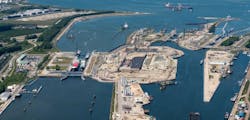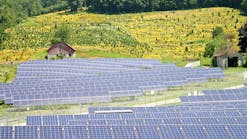Ports of Stockholm plans to add six Solar Energy arrays to reach 1550 MWh
Swedish port operator Ports of Stockholm has announced plans to enhance its solar electricity production with the construction of six new rooftop solar cell systems.
According to the company, the move is expected to boost its own solar production by 55 percent, in line with its own environmental objectives and the city of Stockholm’s strategy to achieve a fossil fuel-free status by 2040.
Ports of Stockholm currently operates five solar cell system installations with a combined production capacity of 995 MWh per year. With the introduction of these new systems, the total number of solar cell installations will reach 11, providing a production capacity of nearly 1.55 GWh (1550 MWh) per year.
The Decarbonization of Ports as part of the C&I Energy Transition
WattEV completes Truck Chargers at Port of Long Beach
Port of Seattle to receive RNG supplied by Puget Sound Energy
The new installations will be sited on the rooftops of Frihamnen port, Värtahamnen port, and Port of Kapellskär, the operator notes. Construction work is expected to commence in the first or second quarter of 2024, with the systems set to be operational by the summer of that year.
By generating its own energy through solar cells, Ports of Stockholm says it aims to reduce its reliance on external electricity suppliers while also cutting down on its own electricity costs. The systems will also contribute to the company’s environmental goals of “more efficient energy use by reducing electricity grid transmission losses, as the electricity will be produced very close to where it will be used”, it adds.
“Ports of Stockholm’s investment in solar electricity is fully aligned with our environmental goals,” said Jens Holm, Chair of the Board of Ports of Stockholm. “This decision means that in future almost one-tenth of the electricity we use will be generated by our own solar cell systems.”
Ports of Stockholm had previously set a target of increasing the proportion of solar electricity by 50 percent by 2026. However, with the scheduled implementation of the new solar cell installations, this goal will be accomplished as early as 2024, the company says.





